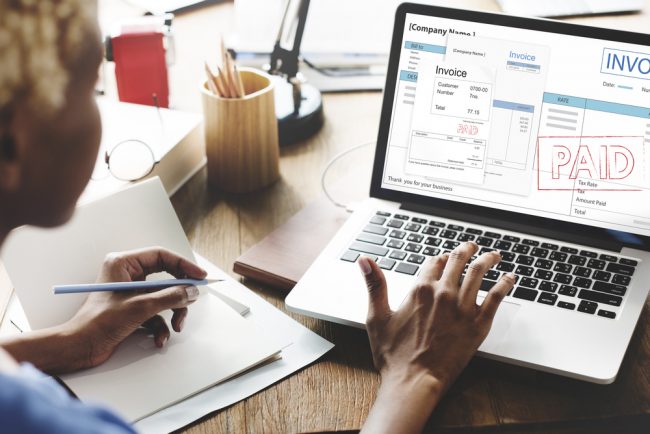Under interrogation from a client, a poorly designed invoice can break, obstructing your progress and even being held against you as a reason not to pay.
For your invoice to stay strong it will need to anticipate any last-minute questions that could act as barriers to you getting paid. Emily Coltman FCA, Chief Accountant to FreeAgent – who provides cloud accounting software for freelancers, micro-businesses and their accountants – gives her top tips on what to include in your invoices to avoid any confusion and help speed up payment.
“Who is this from?”
Fundamentally, it’s pretty important to make sure that your client knows who the invoice is coming from. This might sound self-explanatory, but if your client sees five invoices a week you can’t expect them to take the time to figure out who it’s from. Adding your contact details is the bare minimum you can do to remedy this, but it’s an even better idea to spend time on the design of your invoice template. It’s just as important for your invoice to reflect your brand as it is for your business card or website.
“What work is this about?”
It’s easy to assume that your client will know exactly what you’re invoicing them for, but they will probably have another 20 projects going on at the same time! Even for a straightforward project, it’s always a good idea to remove any conceivable doubt about what you’re asking your client to pay you for. It’s handy to include any Purchase Order numbers, project reference numbers, or even just the project name like “Mel’s Cupcakes site redesign” on the invoice.
“Did it really cost that much?”
If you quoted for a piece of work a few weeks or even months ago, the figure at the bottom of your invoice might not be quite what your client had optimistically hoped for (and let’s be honest, even if your client knew exactly how much they were being charged, it’s never nice to see a figure that you have to pay). This is a great opportunity to remind your client about the great work that you’ve done and exactly what you delivered, using their own language. For example, instead of writing out “prototyping” for a line item on the invoice, you could write “Three workshops to develop website prototypes”.
Including a notes section on your invoice is also a great idea. You can use the space to remind your client about any positive news about the work you’ve done and help soften the blow. For example, if you launched a new website for a client, it would be a nice touch to talk about the success of the launch in the notes section.
“What about that issue we discussed?…”
The notes section is also a great place to address any niggly little doubts or unresolved issues that may keep your client from paying straight away. A lot of projects end up with a snagging list at the end, and heading off any questions about open issues can hopefully help close down a back-and-forth. Something like “Just a reminder that we’re meeting next Tuesday to agree a list of final changes to make” reminds the client that you’re on top of future changes, but they need to stay on top of paying you for the work you’ve already done.
Another great way to resolve any outstanding questions is to encourage your client to phone you, and ensure your phone number is on your invoice. Sometimes a brief phone call can resolve an issue much more quickly than an email chain!
“How long can I put off paying this?”
It can be awkward chasing payment if you haven’t specified a timescale so including clear payment terms on your invoice template is a good way to get rid of any uncertainty. If the client still hasn’t paid by the due date you can feel better about sending them overdue payment notices – but how long should you give them to pay?
Our research shows that the most effective way to get paid within a week of issuing an invoice is to have zero-day terms – in other words, asking the client to pay immediately. If you don’t set a payment date the legal maximum businesses have to pay is 30 days – after that you’re entitled to charge interest. However, it’s a good idea (and also a courtesy) to set out your payment terms and the interest you plan to charge in your initial contract as well as on your invoice.
“Okay I’ll pay! How do I do it?”
Once your client is ready to pay, you want to have everything ready for them so they can do it immediately. At a minimum, make sure that your invoice has your BACS payment details so they can send you the money directly, or even better, you can include immediate payment links using services like Stripe, GoCardless or PayPal.
Emily Coltman FCA is chief accountant to FreeAgent. FreeAgent provides cloud accounting software for freelancers, micro-businesses and the accountants they work with. Try it for free at www.freeagent.com


